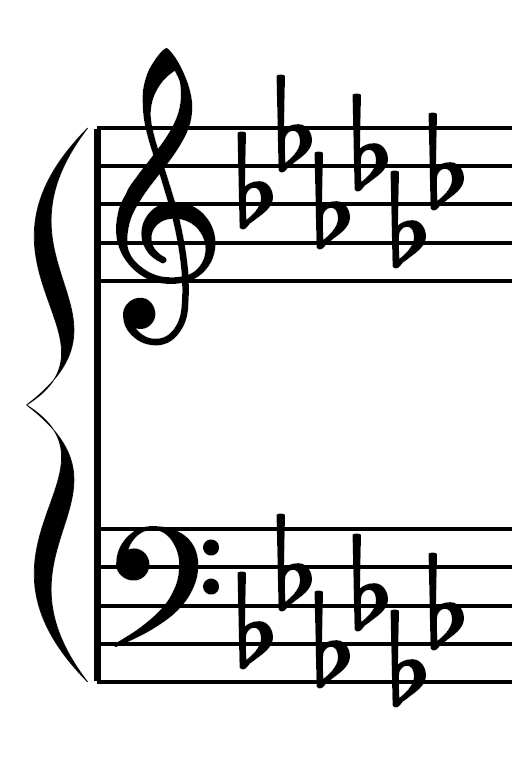


G♭ – A♭ – B♭ – C♭ – D♭ – E♭ – F – G♭ are the notes of the G flat major scale. They have the same pitches but have different note names. What’s the difference between F sharp major and G flat major?į Sharp Major and G Flat Major Scales are enharmonic major scales. We need to learn to read sharps as they’re printed, or else go crazy! The fingering is the same, and such notes are called enharmonic pitches (same sound and fingering, different names), but g-flat and f# are NOT the same. Key signature of G flat major scale The key signature of G flat Major has six flats (6♭). As another example, the key of D Major uses the notes D, E, F#, G, A, B, and C#. It is the only major key using no sharps or flats. The key of C Major uses no sharps or flats. (G-flat, A-flat, B-flat, C-flat, D-flat, E-flat). G-Flat major has six flats, meaning every note in this scale is flat except for F. A minor has zero sharps, E minor has 1, etc.The G-Flat Major scale is another scale that is an enharmonic equivalent. The Cycle of Fifths works for minor keys too. (I don't much worry about a relative major for some region it's three-sharps up but these sharps are not used in the minor. I usually just think of the relative major as being three flats down. Thus for C, the relative minor is A and the relative major for C minor is Eb. The relative minor is a minor third (below the tonic) and the relative major is a minor third above. I don't have any mnemonics for remembering these.

Now, one can count the number of fifths up or fourths down from C to get the number of sharps or flats. Running backwards, (C,F,Bb,Eb,Ab,Db,Gb,Cb) "falling fifths as I think of them, the way many harmonic progressions go.) The flat is added to the seventh note of the starting key (or fourth of the new key). The note getting it is the 7th of the new key (or fourth of the old key), C gets F# to become G, etc. Starting with C, one goes up (at least I think of it as up) by fifths to G,D,A,E,B,F#,C# (which is far enough) by adding a single sharp to the key signature. It's been 70 or more years since I learned this but this is one way with some side benefits.įirst: know the Circle of Fifths (AKA Circle of Fourths, Cycle of Fifths, Cycle of Fourths, etc).


 0 kommentar(er)
0 kommentar(er)
